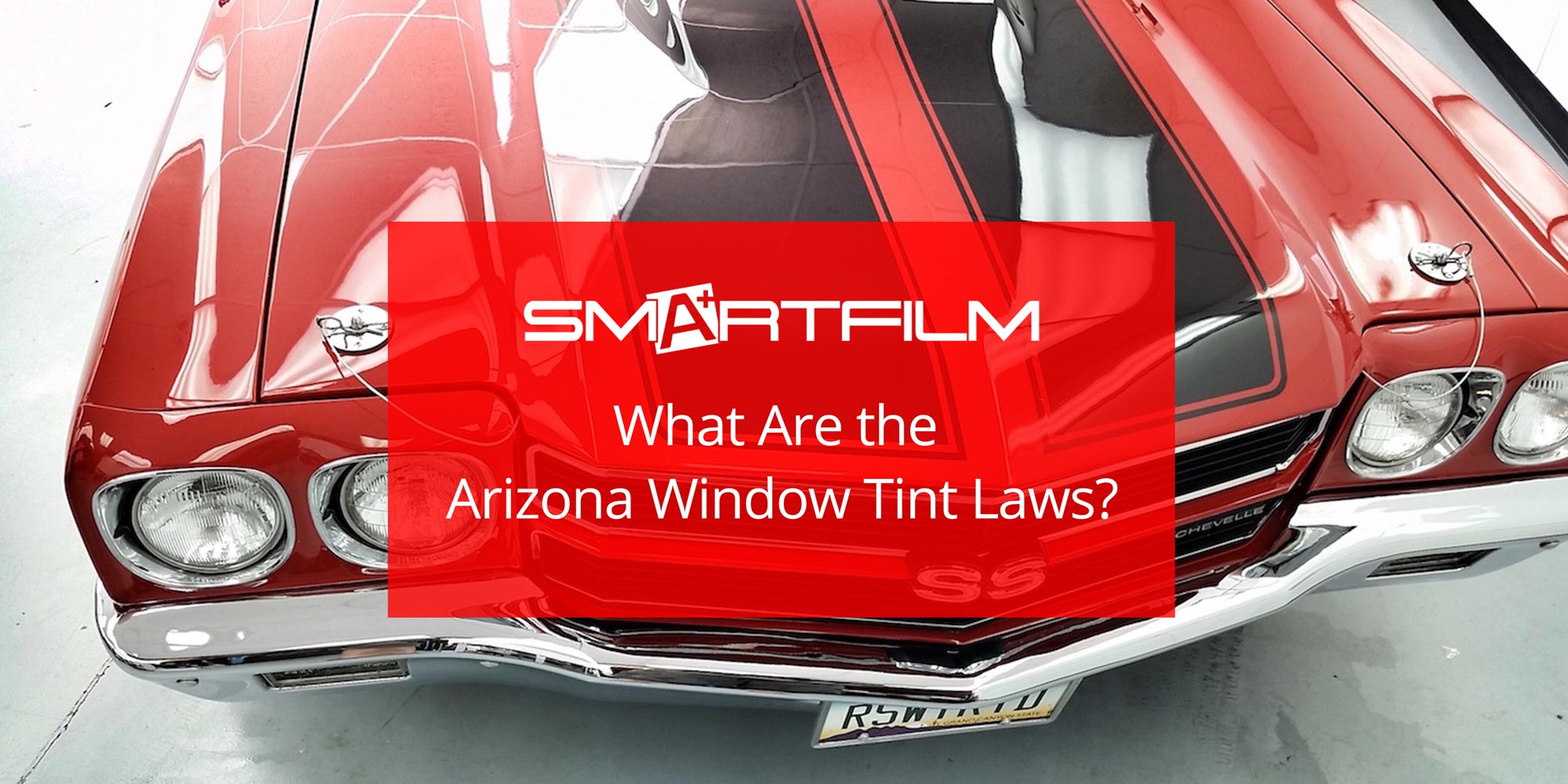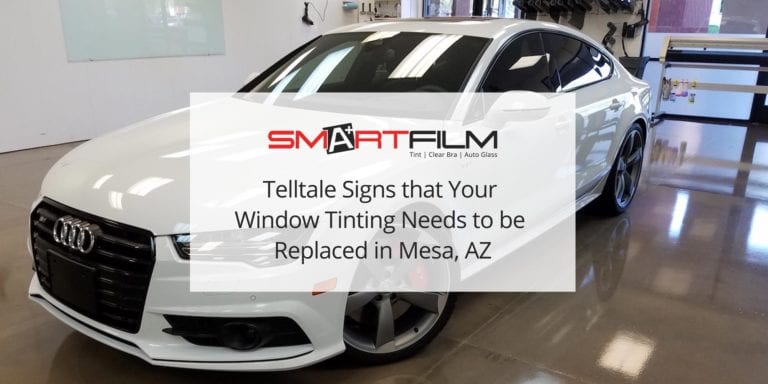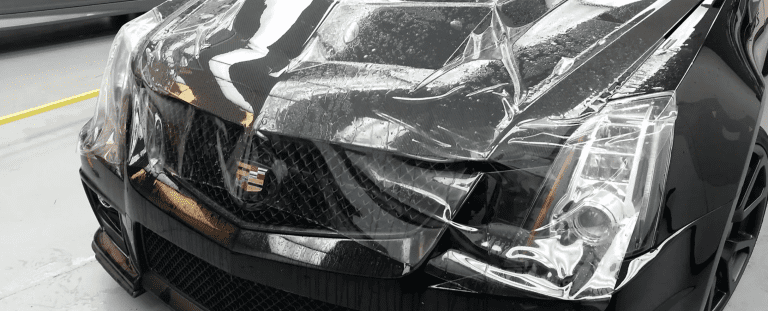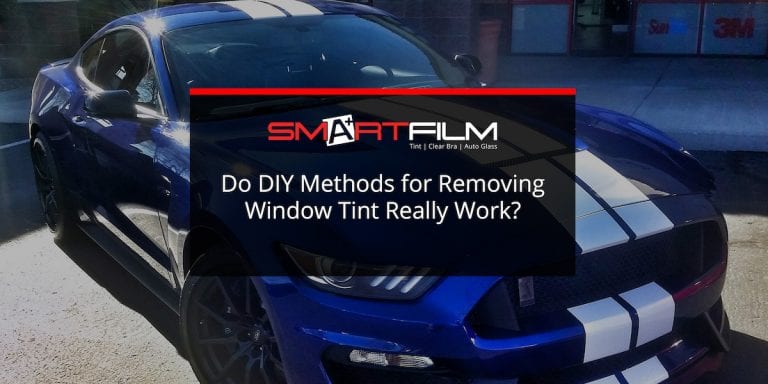How Dark Can You Go With Your Car Tints? The Arizona Tint Laws

Ask any local, and they’ll tell you that car window tinting is vital in AZ for keeping out our famously hot and bright sunshine, which can wreak havoc on our cars and bodies. At the same time, we’re parked in downtown Phoenix or making our daily commutes along crowded major freeways like I-10, the 202, and the 101. While it would be nice to have our cars as shady as possible for comfort’s sake, only certain levels of car window tinting are permitted in AZ by law.
From UV ray skin protection and other medical precautions to personal driving comfort and “coolness factor,” even if you have the best intentions when installing car window tinting on your AZ vehicle, you may still be out of compliance with state law.
Here, we will provide all the necessary information about Arizona’s tint regulations for car windows. The Arizona window tint state law was enacted in 1994. There are some additional rules concerning car window tinting rules in Arizona. We’ve detailed all of our state’s window tint regulations below for your convenience.
The Window Tinting Laws in AZ
Whether you’re heading into Downtown Phoenix for your daily commute or you’re cruising down the I-10 towards your next vacation, the comfort and protection of window tint on your vehicle is phenomenal. But does your Arizona vehicle’s window tint comply with local law? We’ve detailed a few of our state’s window tint laws below for your convenience.
Unless you want to get pulled over by Arizona’s finest, compliance with the window tinting law is necessary.
Reflection Laws of Window Tint Films
Legal regulations about the Arizona Windows Tint Reflection State Laws are very similar to sunglass lenses. Tint films can contain metallic elements that help reflect incoming light and reduce the heat and glare generated by visible light.
All windshield tints above the AS-1-line set by the manufacturer must be non-reflective. However, backside and rear windows can have both a 5% to 35% reflective tint. 35% is the maximum percentage of luminous reflectiveness allowed in the Arizona tint laws.
Front Windshield: Non-reflective tint is allowed above the manufacturer’s AS-1 line.
The percentage of legal visible light is the same for sedan cars and SUVs/ vans.
Front Side windows:
Must not be more than 35% reflective
Back Side windows:
It must not be more than 35% reflective.
Rear Window:
It must not be more than 35% reflective.
The Bylaws on Window Tinting Film Darkness
Rules about the Arizona Windows Tint Darkness Laws. Besides reflectiveness, the tint darkness (indicated in percentages) is also highly important. The darkness of your car window tinting is measured by Visible Light Transmission percentage (VLT%). The window tint law has rules and regulations about tint darkness that apply to your whole car.
Front Windshield: Non-reflective tint is allowed above the manufacturer’s AS-1 line.
The percentage of visible light legal is the same for sedan cars and SUVs/ vans.
Front Side windows:
Must allow more than 33% of light in.
Back Side windows:
Any darkness can be used.
Rear Window:
Any darkness can be used.
Other Factors to Keep in Mind On Window Tinting Regulations And Laws
- Do not use red or amber colors when choosing a tint, as these colors are illegal.
- If your rear window is tinted, your vehicle needs dual side mirrors to compensate for the darkness and potential vision obstruction from tint damage.
- No sticker is required to identify legal tint.
- You can receive an exemption from the Arizona Department of Transportation or ADOT if you can provide evidence of medical exemption from your physician.
- Film manufacturers do NOT need to certify the film they sell in the state.
- It’s a good idea to double-check this information with your local DMV, the Arizona Department of Transportation, or local law enforcement authorities.
By obeying these state tint laws, Arizona’s drivers can install car window tinting without any fear of repercussions.
Legal Car Window Tinting in AZ
- Your windshield has a non-reflective tint above the manufacturer’s AS-1 line.
- Your front side windows allow more than 33% of light to enter (i.e., a light transmission of 33%).
- Your rear and backside windows have 35% reflective tint, with 5% being the darkest tint you can apply, provided the tint does not obstruct your view or distract from your driving. This usually applies to bubbles, smudges, and lines in your tint.
- Dual side mirrors are required to make up for a darkened rear window.
- Your car has a substance or material that reduces the light transmittance or alters the color for a luminous reflection of 35% or less.
- Your windows are tinted with any color other than red or amber.
- You have received a window tinting exemption from ADOT for medical reasons such as sunlight allergies, photosensitivity, melanoma, or lupus. This can only happen after submitting a letter signed by your physician about the medical necessity for your car window tinting and an AZ registration or out-of-state registration for all vehicles to be tinted to the Medical Review Program. Arizona allows medical exemptions with no problem.
Car Window Tinting Violations and Penalties Under the AZ Law
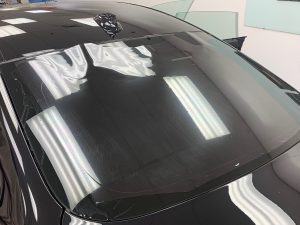
Arizona law enforcement can pull you over on suspicion of a front window that is too dark. Most officers will use a tint meter to determine whether or not this is too dark. A tint meter measures how much light passes through your window. If you tint your windows too dark, the officer will give you a ticket.
If you get a ticket, Arizona State has a ‘fix-it ticket” called the Equipment Repair Order. You only pay a small fine when you prove that you got window tint removal to remove the violation. If you do not do this, you can pay a fine of up to $250.
- Operating any car with window tinting that does not meet AZ legal requirements is illegal.
- Police officers can issue a citation for an illegally dark tint, measured using a tint meter that reads how much light passes through your car’s windows.
- For each time your car window tinting violates AZ law, you can earn a fine of up to $250.00.
Protect Your Vehicle with the Right Window Tint Installation
Car window tinting is a vital part of daily life in AZ. Between the numerous health, safety, and monetary benefits that car window tinting can provide for AZ drivers, installing window tinting on your car is a smart investment in your present and future–as long as your window tint complies with the law.
When it comes to protecting the health of your car and yourself in a legal and safe manner, car window tinting for your AZ automobile is the way to go.
How to Avail Window Tinting Exemption
If, for some medical reason, your passengers need specific protection from the direct UV rays of the sun, you can always seek medical exemption from the Arizona Department of Transportation (ADOT), as we’ve mentioned earlier. All you need to do is to complete an Application for Window Tint Medical Exemption, certified by a medical provider.
Afterward, your application will be passed to the Medical Review Program, and once approved, any car you own or regularly use will be exempted from the Arizona window tinting requirements. Keep in mind that this tint exemption does not include your front windshield.
For safety reasons, we must abide by the Arizona window tinting regulations from the Arizona State Department of Transportation.
The Importance of Abiding These Window Tint Laws

Every state has a collection of tint laws and regulations that clients and makers must comply with. If you are a customer, take responsibility in searching your regional tinting legislation; don’t concentrate on “home window color near me” searches. If you are a supplier, you must comply with these tinting laws and educate the consumer if they are uninformed of the regulations and window tint laws.
Obviously, there are exceptions to these regulations. For example, a person who suffers from some sort of skin cancer requires heavily colored front-side windows in Arizona’s heat. While mirrored window films are not basically illegal, some states do not allow the use of these.
If you find yourself stuck to the very same outcomes of your “window tint near me” searches, attempt to seek out your neighborhood tinting laws, as it might give you an idea of what works best for your cars and trucks. In addition, as a righteous resident, you get to delight in the advantages of window tinting. The Arizona window tint law is created to protect you as well.
Consult Arizona’s Window Tint Experts at Smartfilm AZ for Your Car Tinting Needs
As the leading Arizona car window tinting provider, we’re happy to answer any questions you might have about car window tinting and tint rules. Give us a call today!
Our expert window tinting and paint protection film services in Mesa, Tempe, Gilbert, and the surrounding Arizona metro area will keep your car cooler, protect your loved ones from UV rays, and maintain its pristine condition.
FAQ’S
Where in Arizona can I find Smartiflm Services?
Mesa, Tempe, and Gilbert are some cities where you can find us to give your car the best treatment with high-quality work.
Who is Smartfilm tint provider?
You can rest assured that we work only with other car brands that care to provide clients with the best services. That is why Xpel works with us to maintain quality work in every detail of our services.
